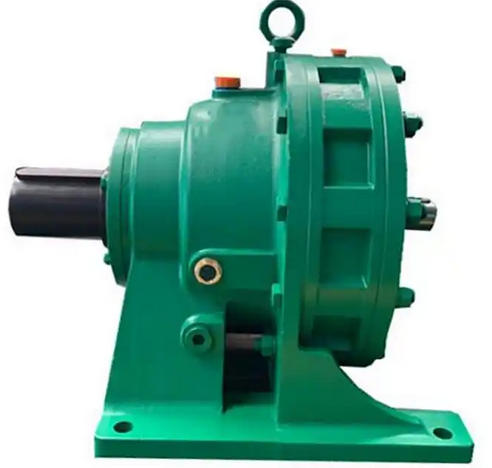What is the difference between standard speed ratio reducers and non-standard speed ratio reducers
The main differences between standard speed ratio reducers and non-standard speed ratio reducers are reflected in design flexibility, application scenarios, and production processes. The specific comparison is as follows:
1、 Speed ratio range and design standards
1. Standard speed ratio model

The speed ratio range is fixed and has strong universality. For example, the standard speed ratio of a single-stage cycloidal pinwheel reducer is 9-87 (common models such as 9, 11, 17, 23, etc.), and the two-stage speed ratio is achieved through a single-stage combination (such as 99=9 × 11, 121=11 × 11).
The design follows industry standards (such as JB standards) and is suitable for over 90% of general industrial scenarios.
2. Non standard speed ratio models
Customized speed ratios, such as single-stage speed ratios of 21, 25, 47, etc., need to be designed according to special requirements (such as specific winding speeds for textile machinery).
The speed ratio of multi-stage transmission can reach tens of thousands (such as the speed ratio of three-stage cycloidal reducer 2057~658503), but customized development is required.
2、 Application scenarios and performance differences
1. Standard model
Suitable for conventional loads, such as conveyor belts (speed ratio 9-43), crushers (speed ratio 59-87), etc.
The transmission efficiency is relatively high (such as a single-stage planetary gearbox with an efficiency of 95% -96%).
2. Non standard models
For extreme working conditions, such as ultra-low speed heavy-duty (mining mills) or special speed requirements (precision indexing tables).
The efficiency may be slightly lower (multi-stage transmission efficiency decays to 93% -94%).
3、 Production and Cost
Standard model: Mass production, low cost, short delivery cycle.
Non standard models: require separate design, high cost and long cycle, commonly found in customized equipment (such as ship propulsion systems).
4、 Selection suggestions
Prioritize choosing standard speed ratios to reduce costs;
Special requirements (such as non-standard torque or space limitations) need to be evaluated for customization feasibility.
5、 Summary
The standard speed ratio reducer is the "cost-effective choice", suitable for most particle production scenarios that do not require high speed accuracy and pursue a balance between efficiency and cost; Non standard speed ratio reducers are the "precise adaptation choice", only suitable for special scenarios where high speed accuracy is required and standard speed ratios cannot meet it. When selecting, it is necessary to first calculate the "theoretical speed ratio", and then compare whether the deviation of the standard speed ratio is within the tolerance range of the host. Priority should be given to adapting the standard speed ratio through "adjusting the motor speed (such as variable frequency motor)", and only consider customizing non-standard models when the deviation exceeds the standard, in order to minimize costs and risks in the later stage.

